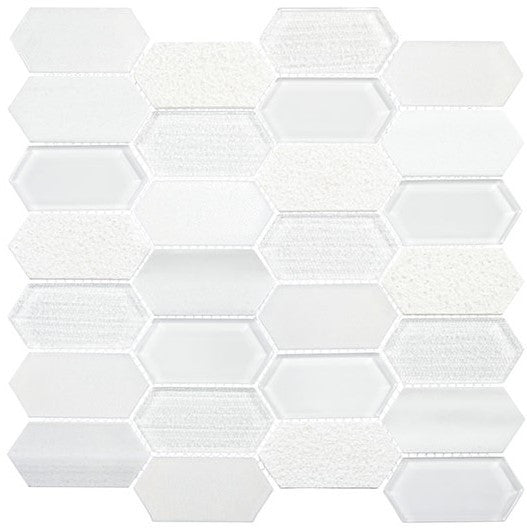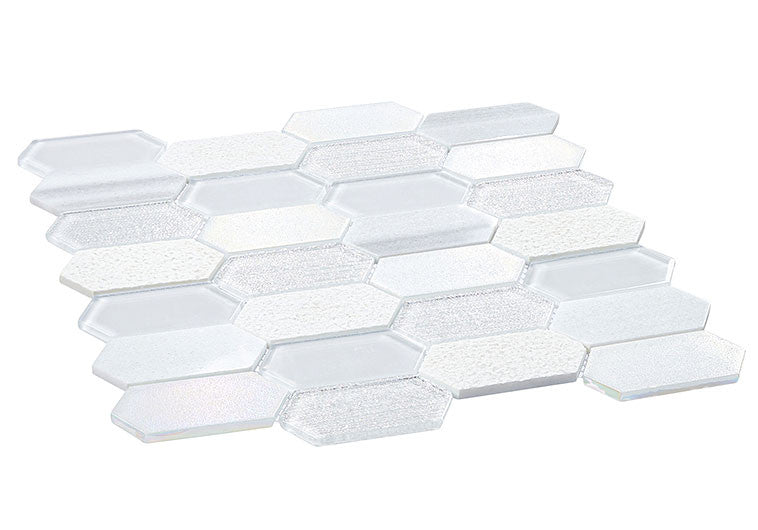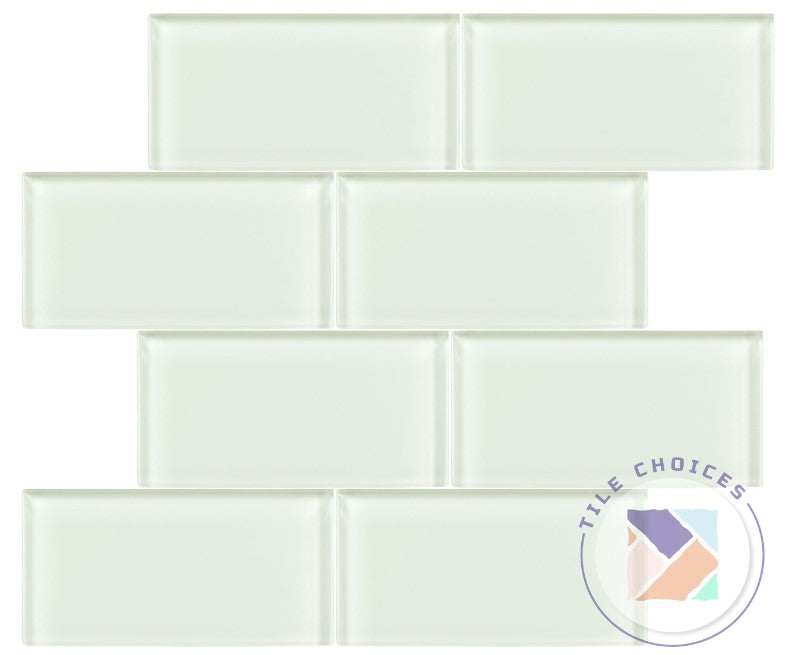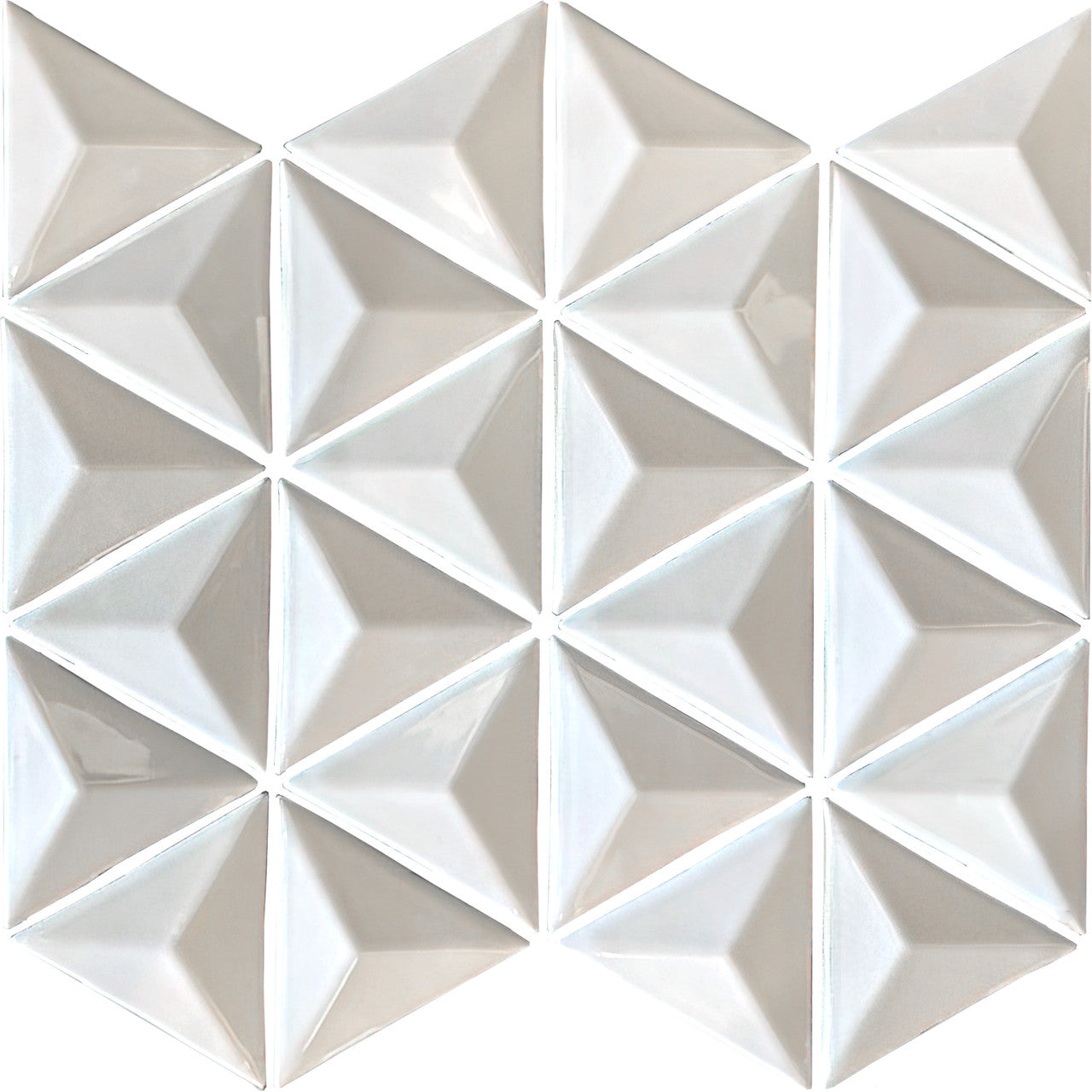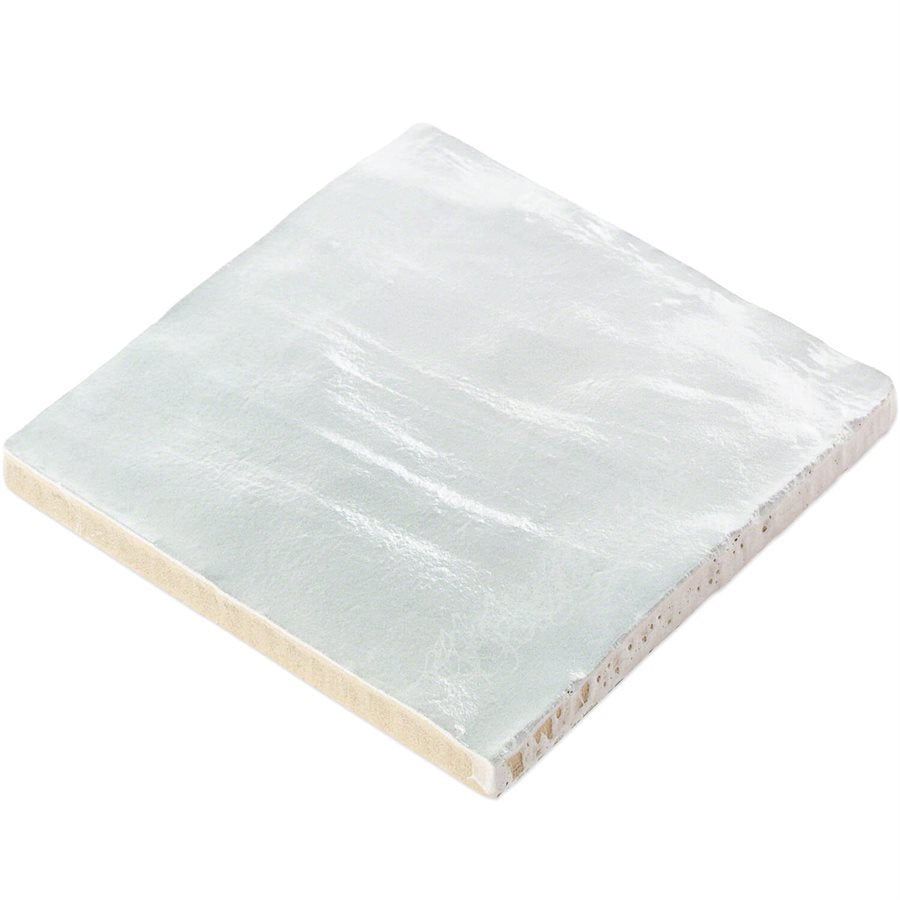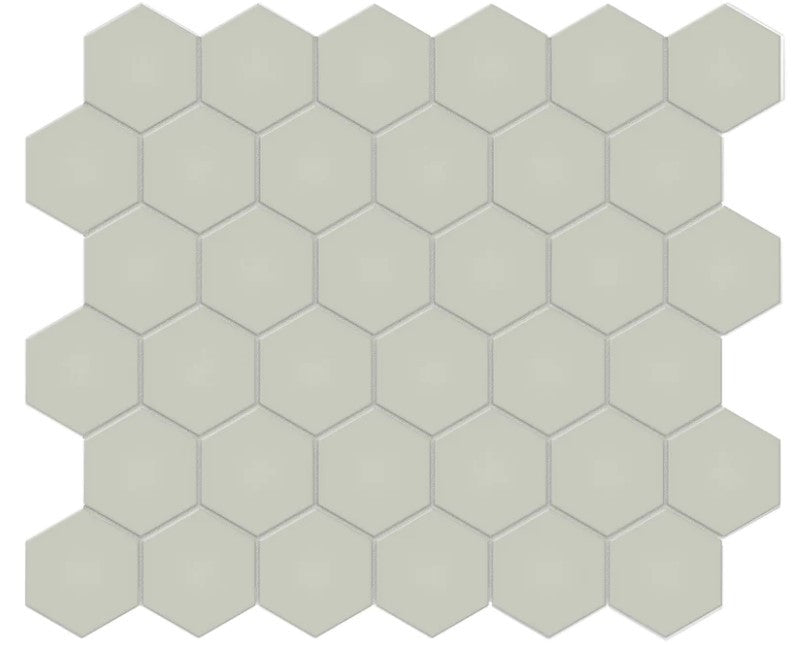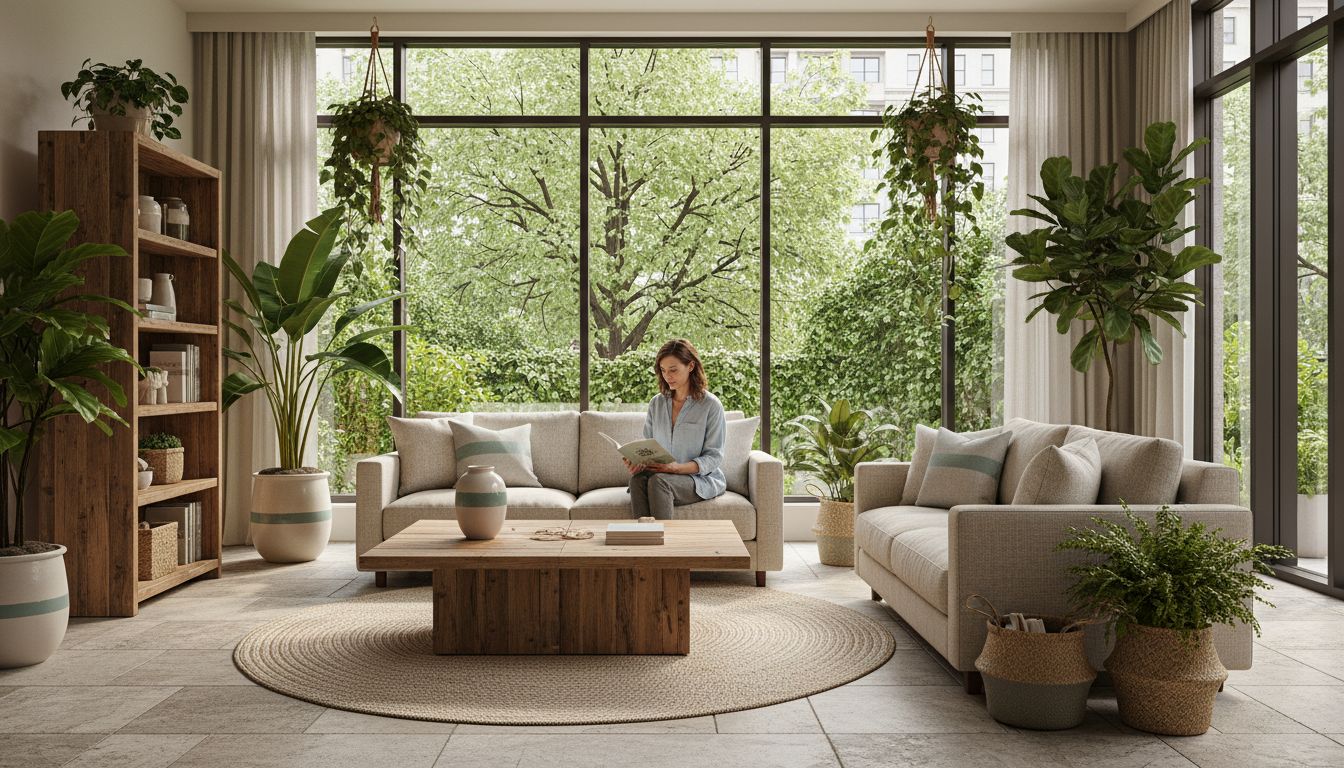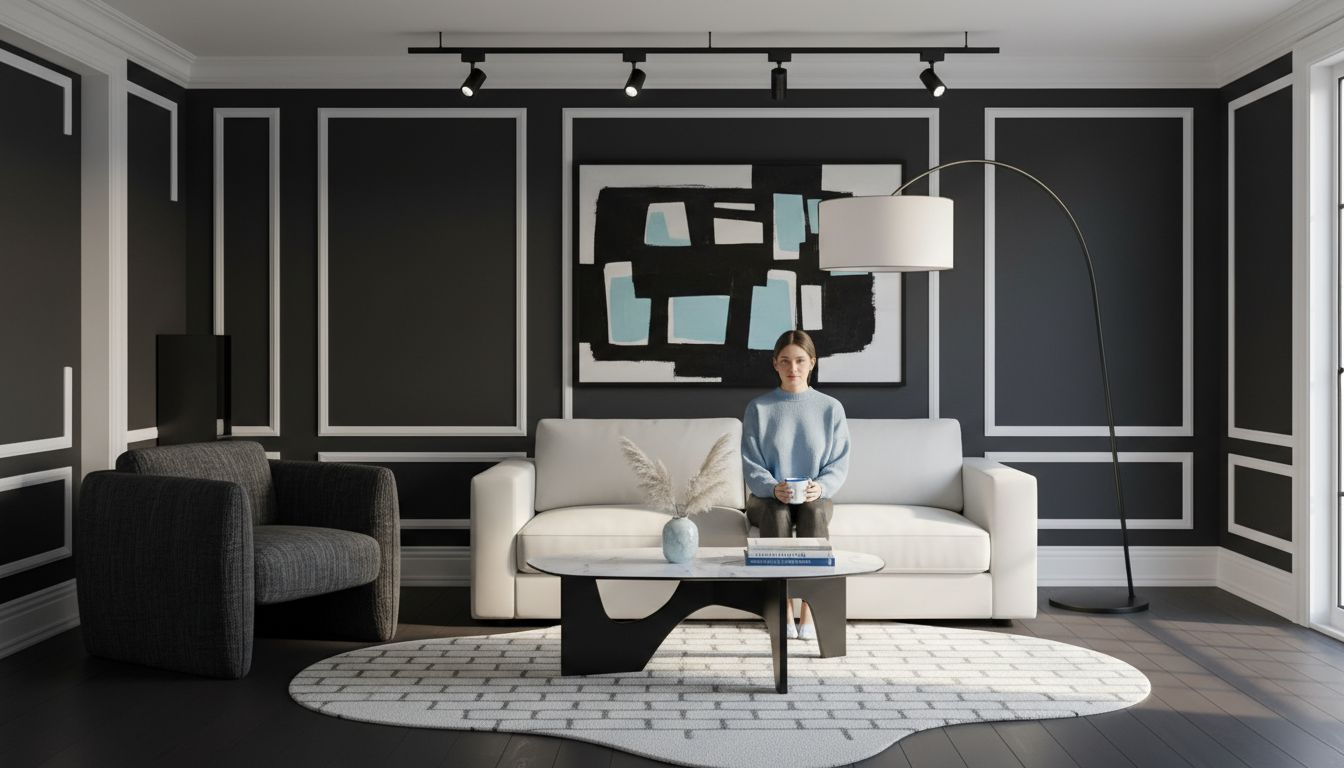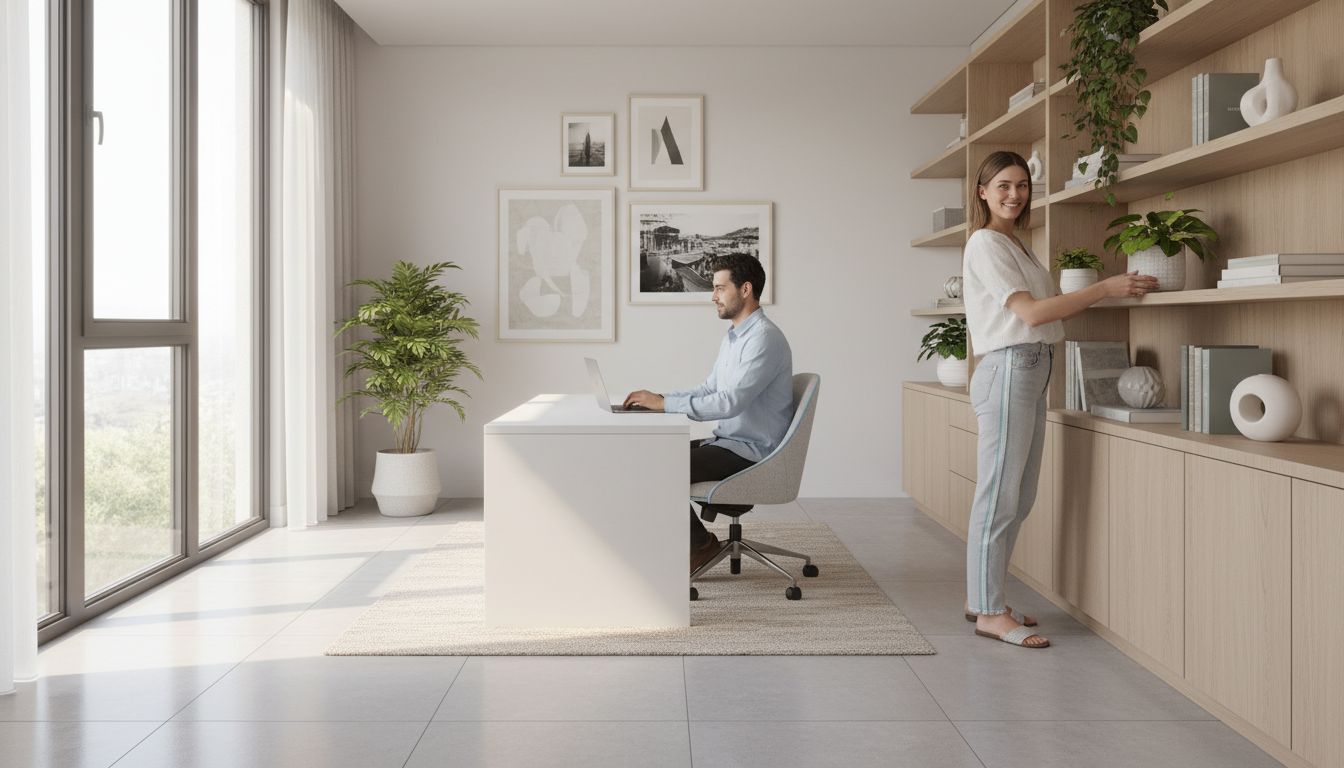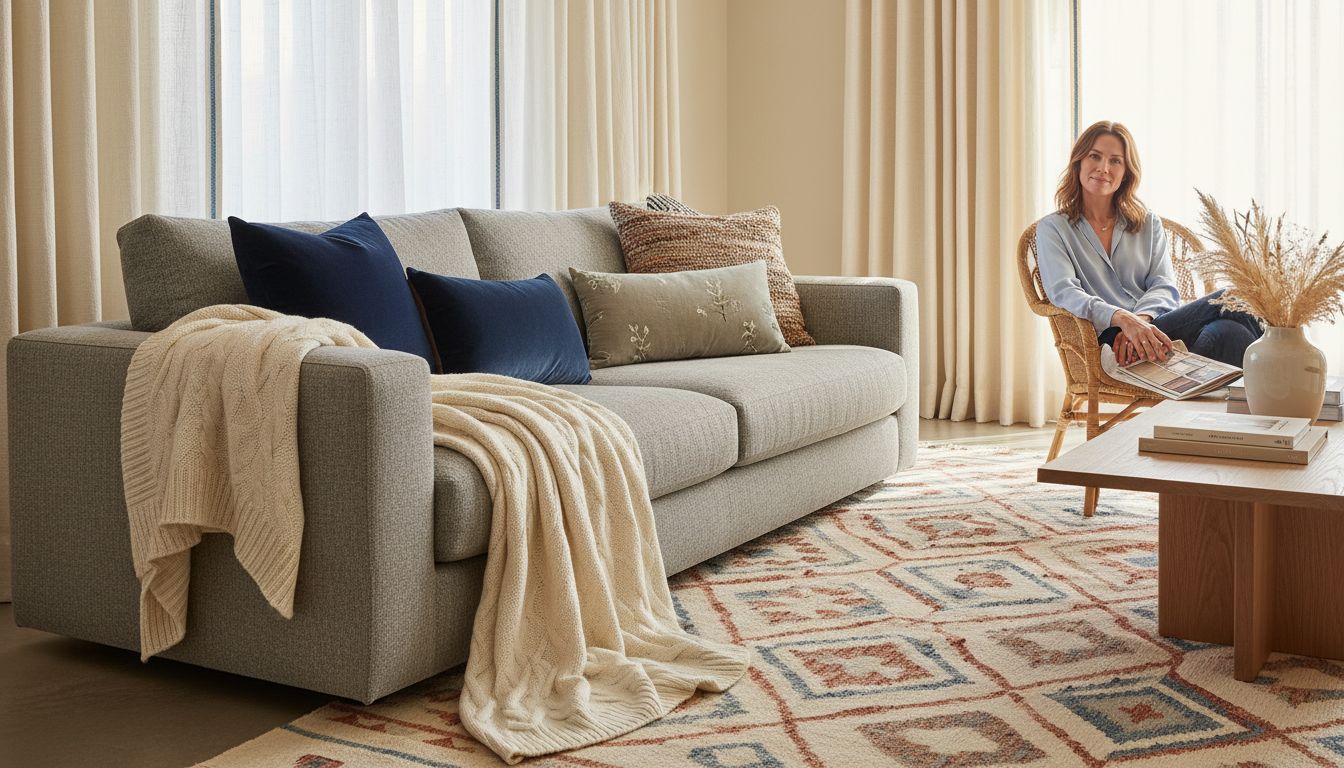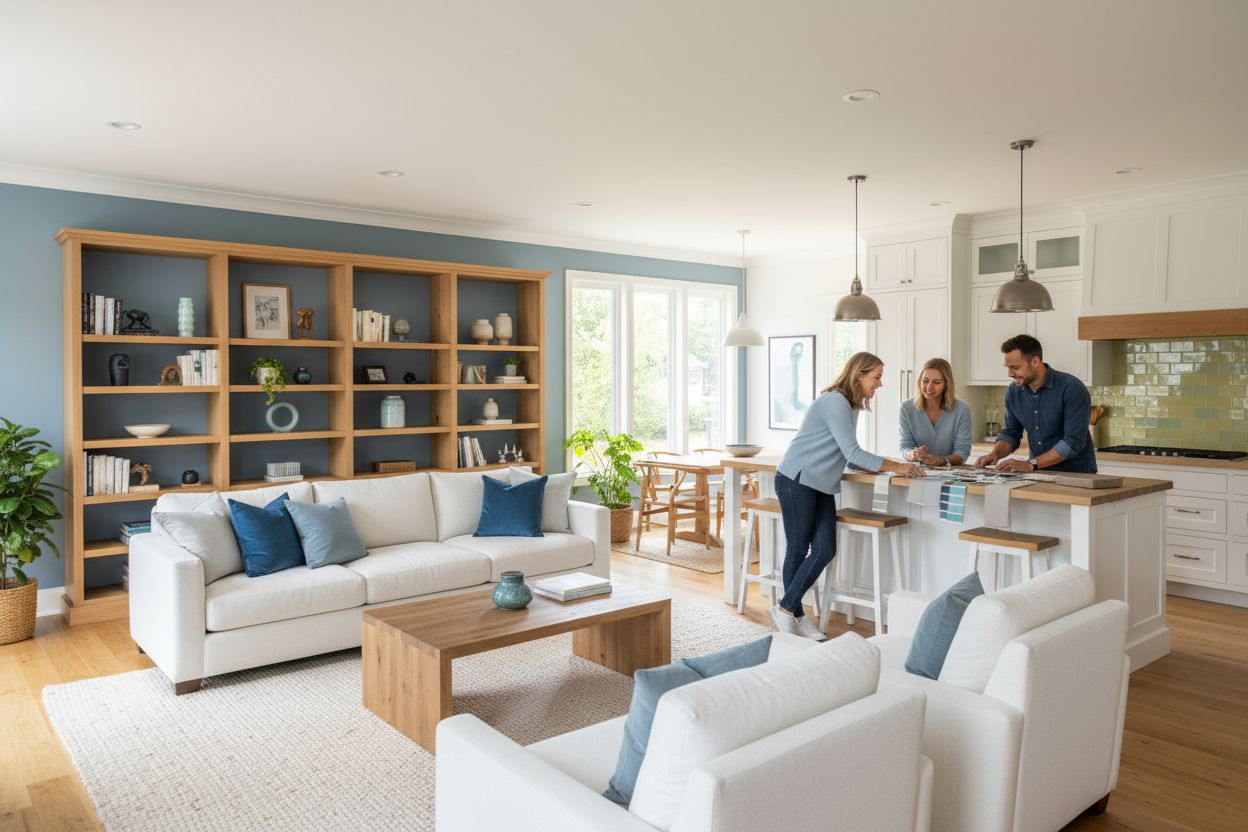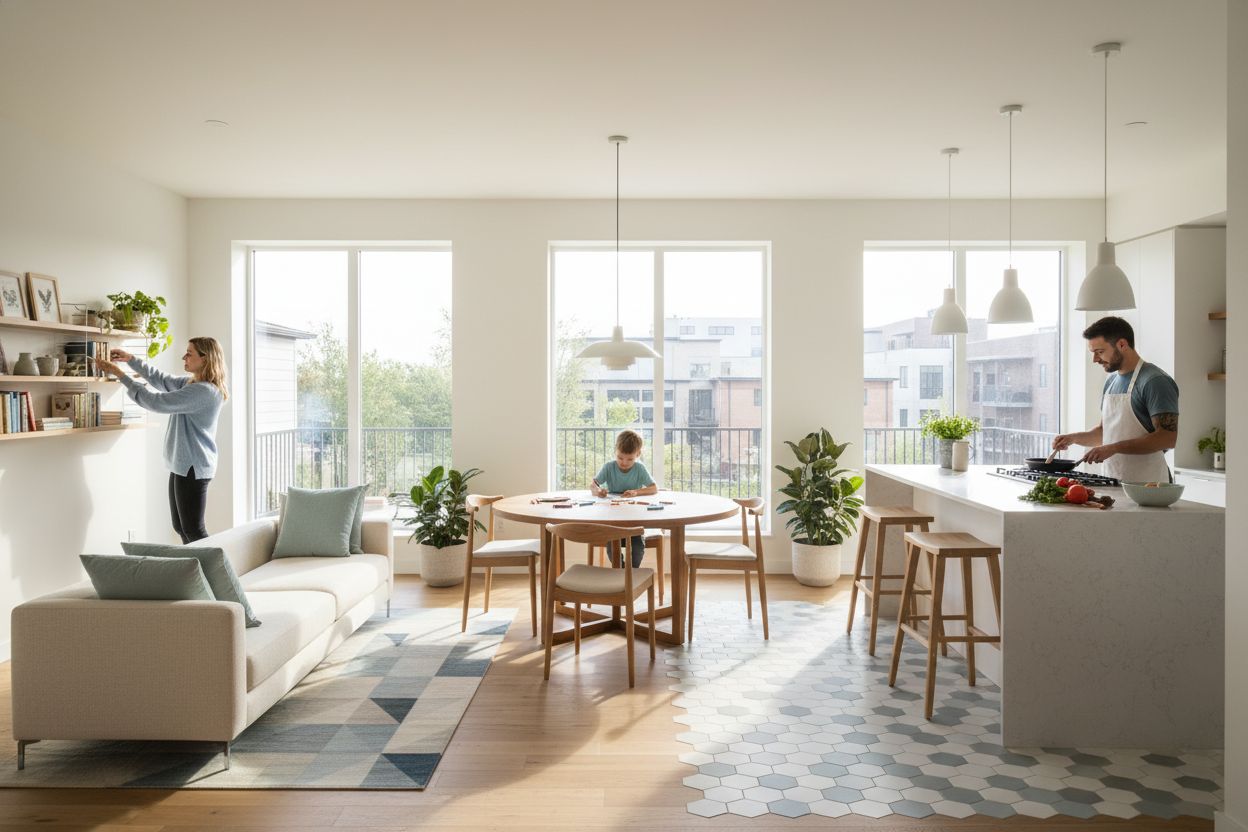Every year, homeowners invest billions in upgrading their outdoor living spaces, yet most struggle to make these areas feel both beautiful and practical. A well designed patio or backyard can become an oasis where relaxation and togetherness come naturally. By focusing on functional layout, the right materials, seamless design, and easy upkeep, you can create an outdoor space that truly feels like an extension of your home.
Table of Contents
- 1. Plan Your Outdoor Living Space Layout
- 2. Choose Weather-Resistant Tile Materials
- 3. Blend Indoor And Outdoor Design Elements
- 4. Incorporate Functional Outdoor Furniture
- 5. Use Lighting To Define Outdoor Zones
- 6. Ensure Safe And Slip-Resistant Surfaces
- 7. Maintain Tiles For Long-Lasting Appeal
Quick Summary
| Takeaway | Explanation |
|---|---|
| 1. Define distinct outdoor zones. | Create areas for living, public interactions, and service to maximize functionality and flow in your space. |
| 2. Choose durable, weather-resistant tiles. | Select tiles like porcelain or natural stone that withstand temperature changes and moisture to maintain beauty and safety. |
| 3. Blend indoor and outdoor design elements. | Use similar colors and materials to create a cohesive transition that makes outdoor areas feel inviting and connected to your home. |
| 4. Incorporate functional outdoor furniture. | Opt for versatile, weather-resistant furniture that balances comfort and style, enhancing usability for entertaining or relaxation. |
| 5. Prioritize slip-resistant surfaces. | Select tiles with textured surfaces and proper certifications to ensure safety in outdoor living areas, reducing the risk of accidents. |
1. Plan Your Outdoor Living Space Layout
Creating a successful outdoor living space starts with thoughtful planning and strategic design. According to research from Michigan State University, defining your outdoor area into distinct zones is the fundamental first step in maximizing your exterior environment.
Start by visualizing how you want to use the space. Functional zoning transforms an ordinary backyard into a purposeful extension of your home. As recommended by gardening experts, consider dividing your outdoor area into three key segments: living area, public area, and service area.
Living Area: This is your primary relaxation zone. Think comfortable seating, perhaps around a fire pit or under a pergola. Consider the view, sunlight exposure, and how this space connects to your indoor living spaces.
Public Area: This zone welcomes guests and creates social interaction spaces. It might include a dining area, outdoor kitchen, or entertainment zone. Ensure smooth traffic flow and enough space for movement.
Service Area: Practical spaces for storage, grilling, or utility functions. These areas should be accessible but not visually dominant.
Pro tips for successful layout planning:
- Sketch a rough blueprint before purchasing furniture
- Measure your available space precisely
- Consider natural traffic patterns
- Plan for both sunny and shaded spots
Additionally, mixing tile patterns for stunning spaces can enhance your outdoor design, helping create visually cohesive zones that flow seamlessly.
Remember. A well-planned outdoor living space feels like a natural extension of your home. Take time to design thoughtfully.
2. Choose Weather-Resistant Tile Materials
When designing an outdoor living space, selecting the right tile materials can make the difference between a stunning long lasting area and a maintenance nightmare. Not all tiles are created equal especially when exposed to varying weather conditions.
Durability is key when choosing outdoor tiles. You need materials that can withstand intense sunlight, freezing temperatures, heavy rain, and potential temperature fluctuations without cracking or degrading.
The best outdoor tile materials include:
- Porcelain tiles (extremely dense and low water absorption)
- Natural stone tiles like granite or slate
- Ceramic tiles with proper outdoor rating
- Concrete tiles
Porcelain tiles stand out as the premier choice for outdoor spaces. They offer superior resistance to moisture, temperature changes, and wear. Their dense composition makes them virtually impervious to water absorption which prevents cracking during freeze thaw cycles.
Consider understanding heat resistant tiles to further refine your material selection strategy. Look for tiles specifically rated for exterior use with high durability ratings.
Practical tips for selection:
- Check the tile water absorption rate (lower is better)
- Verify slip resistance for safety
- Select tiles with UV resistant glazing
- Consider local climate conditions
Invest in quality materials upfront. Your outdoor living space will thank you with years of beautiful low maintenance performance.
3. Blend Indoor and Outdoor Design Elements
Transforming your outdoor living space into a seamless extension of your home requires more than just placing furniture outside. Design continuity is the secret to creating a harmonious environment that feels natural and inviting.
Think of your outdoor area as another room in your house. Just as you carefully select colors and textures inside, apply the same design principles to your exterior space. Color palettes, material selections, and design styles should flow smoothly between indoor and outdoor areas.
Matching design elements create visual connections. Consider using similar tile patterns, color schemes, or architectural details that echo your interior design. For example, if your living room features gray stone tiles, select outdoor tiles that complement or match those tones.
Key strategies for blending indoor and outdoor spaces:
- Use consistent color palettes
- Select similar flooring materials
- Match architectural styling
- Create visual sight lines between spaces
- Use similar furniture design languages
Understanding outdoor patio tile ideas can provide additional inspiration for creating these seamless transitions. Professional designers recommend treating your outdoor space as a deliberate extension of your interior living environment.
Remember. Great design tells a continuous story from inside to outside. Make every design choice intentional and connected.
4. Incorporate Functional Outdoor Furniture
Outdoor furniture transforms your exterior space from a basic backyard into a livable extension of your home. According to gardening experts, furniture allows you to fully enjoy your landscape and express your personal style.
Functionality meets design when selecting outdoor furniture. Your choices should balance comfort, durability, and aesthetic appeal. Consider how you will actually use the space: Will you host dinner parties? Need a reading nook? Planning family gatherings?
Multi purpose furniture becomes crucial in modern outdoor living spaces. Look for pieces that offer versatility like:
- Modular seating with storage compartments
- Extendable dining tables
- Convertible lounge chairs
- Weather resistant ottomans with hidden storage
Material selection matters tremendously. Opt for weather resistant materials like powder coated aluminum, synthetic woven fibers, or treated teak wood. These materials withstand sun exposure rain and temperature fluctuations without compromising style.
Understanding types of floor tiles can help you coordinate your furniture selection with your outdoor flooring for a cohesive look. Professional designers recommend thinking of outdoor furniture as an investment in your living environment.
Pro tip. Comfort is king. Always test furniture in person and consider adding weather resistant cushions for extra comfort and style.
5. Use Lighting to Define Outdoor Zones
Lighting does far more than illuminate your outdoor space. It creates atmosphere, defines functional areas, and transforms your exterior environment into a magical evening retreat. According to gardening experts, strategic lighting provides both practical guidance and dramatic visual appeal.
Zonal lighting is about creating purposeful illumination that highlights different areas of your outdoor living space. Think of lighting as an invisible architect that shapes how people move through and experience your exterior environment.
Consider these strategic lighting approaches:
- Path lighting for walkways and transitions
- Ambient lighting for gathering spaces
- Task lighting near cooking or dining areas
- Accent lighting to highlight architectural features
- Soft perimeter lighting for safety and mood
Layer your lighting types to create depth and dimension. Combine overhead string lights with ground level path markers. Use solar powered stake lights along walkways. Install dimmable LED fixtures that can adjust to different moods and occasions.
Understanding heat resistant tiles can also help you select materials that complement your lighting design and withstand outdoor conditions.
Pro tip. Use warm white lights (2700 3000K) for a cozy inviting atmosphere. Cool white lights create a more modern industrial feel. Match your lighting temperature to your overall design aesthetic.
Remember. Great outdoor lighting tells a story. It guides. It welcomes. It transforms.
6. Ensure Safe and Slip-Resistant Surfaces
Safety should never be an afterthought in outdoor living spaces. Your beautiful design means nothing if guests risk injury walking across slippery surfaces. Surface traction becomes a critical consideration for any well designed exterior environment.
Slip resistance depends on multiple factors including tile texture, material composition, and surface treatment. Not all outdoor tiles are created equal when it comes to preventing accidents. Wet conditions can transform a smooth surface into a potential hazard.
Key features to look for in slip resistant tiles:
- Textured surface with micro grooves
- Matte finish rather than glossy
- Raised pattern or slightly rough texture
- Low water absorption rate
- Certified slip resistance rating
Porcelain and natural stone tiles with a slightly rough finish provide excellent grip. Avoid highly polished surfaces in areas prone to moisture like pool decks, outdoor kitchen spaces, or walkways.
Understanding types of floor tiles can help you make informed decisions about surface safety. Professional designers recommend prioritizing function alongside aesthetic appeal.
Pro tip. Always request slip resistance test results when selecting outdoor tiles. Look for tiles with a coefficient of friction above 0.6 for maximum safety.
Remember. Beautiful design protects. Smart surfaces prevent accidents.
7. Maintain Tiles for Long-Lasting Appeal
Beauty fades. But well maintained outdoor tiles can keep their stunning appearance for decades. Proactive maintenance transforms your outdoor living space from a temporary design to a lasting investment.
Outdoor tiles face constant environmental challenges. Sunlight, rain, temperature changes and foot traffic can gradually degrade even the most durable materials. Regular care prevents cracking, discoloration, and structural damage.
Maintenance fundamentals for outdoor tiles include:
- Quarterly deep cleaning
- Annual professional inspection
- Immediate stain treatment
- Regular grout sealing
- Protective surface treatments
Use pH neutral cleaning solutions specifically designed for outdoor tiles. Avoid harsh chemicals that can erode surface treatments or damage tile compositions. Soft bristle brushes work best for removing dirt without scratching delicate surfaces.
Guide on sealing tiles and grout provides comprehensive insights into protecting your tile investment. Professional designers recommend creating a consistent maintenance schedule.
Pro tip. Different tile materials require unique care approaches. Porcelain needs different treatment compared to natural stone. Always consult manufacturer recommendations.
Remember. Maintenance is not a chore. It is an investment in beauty.
Below is a comprehensive table summarizing the key strategies and considerations for designing and maintaining well-planned outdoor living spaces discussed throughout the article.
| Strategy/Consideration | Key Points & Actions | Benefits/Outcomes |
|---|---|---|
| Plan Layout | Visualize zones: living, public, service. Sketch, measure space, and consider natural traffic. | Maximizes space efficiency; seamless home extension |
| Choose Tiles | Opt for durable, weather-resistant materials: porcelain, natural stone. Check water absorption, slip resistance. | Longevity; reduces maintenance headaches |
| Blend Design Elements | Match indoor and outdoor design: color palettes, materials, styles. Create visual connections. | Harmonious environment; seamless aesthetic flow |
| Select Furniture | Choose multifunctional, weather-resistant pieces. Consider comfort and intended use. | Enhanced usability; personal style expression |
| Use Lighting | Implement zonal lighting: path, ambient, task, accent. Layer lighting types. | Defines zones; creates atmosphere |
| Ensure Safe Surfaces | Select tiles with textured surfaces and low water absorption. Verify slip resistance. | Prevents accidents; ensures guest safety |
| Maintain Tiles | Schedule regular cleaning and inspections. Use appropriate cleaning solutions. | Preserves tile appearance; extends lifespan |
Elevate Your Outdoor Living Space with Durable, Stylish Tiles
Creating modern outdoor living areas that blend design continuity, safety, and weather resistance can be challenging. This article highlights key concerns like choosing the right weather-resistant tile materials, blending indoor and outdoor elements, and ensuring slip-resistant surfaces to keep your space beautiful and safe year-round. If you want to avoid common pitfalls such as cracking tiles or slippery floors while enjoying seamless style and lasting comfort, focusing on quality tile solutions is essential.
At TileChoices.com, we understand these challenges. Our vast selection of premium outdoor tiles—from porcelain to natural stone—offers superior durability and elegant designs that help you craft inviting zones that feel like a true home extension. Explore our educational blog for expert tips on tile maintenance and design inspiration. Ready to transform your outdoor space now? Visit TileChoices.com to shop quality tiles that combine safety, style, and longevity. Start your project today for beautiful outdoor living you can enjoy for years.
Frequently Asked Questions
How can I effectively plan my outdoor living space layout?
To effectively plan your outdoor living space, start by visualizing how you want to use the area. Create distinct zones—like living, public, and service areas—and sketch a rough blueprint before purchasing furniture.
What tile materials are recommended for outdoor living spaces?
Select durable tile materials that can withstand weather variations, such as porcelain, natural stone, or high-quality ceramic tiles. Make sure to check for low water absorption rates and slip resistance to enhance safety and longevity.
How can I blend indoor and outdoor design elements?
To blend indoor and outdoor spaces, use consistent color palettes and select similar flooring materials. Match architectural styles and create visual sight lines between both environments to achieve a harmonious look.
What types of outdoor furniture are best for functional use?
Choose multi-purpose outdoor furniture that combines style and functionality, such as modular seating with storage or extendable dining tables. Opt for weather-resistant materials that can withstand outdoor conditions while maintaining comfort and aesthetic appeal.
How can I use lighting to define different outdoor zones?
Use zonal lighting to create atmosphere and highlight functional areas in your outdoor space. Consider a mix of path lighting, ambient lights, and accent lighting to enhance visibility and mood throughout different settings.
What are the best practices for maintaining outdoor tiles?
Maintain your outdoor tiles by implementing a maintenance routine that includes quarterly deep cleaning and regular grout sealing. Aim for proactive maintenance to prevent cracking and discoloration, which can diminish the beauty of your outdoor space.
Recommended
- Master Mixing Tile Patterns for Stunning Spaces – Tile Choices
- 8 Luxury Bathroom Tile Ideas for a Stunning Makeover – Tile Choices
- 7 Timeless Tips for Choosing Vintage Tile Patterns – Tile Choices
- 7 Practical Open Plan Living Ideas for Stylish Spaces – Tile Choices
- Outdoor Furniture: Choose, Style, and Maintain with Ease – Teely
- Understanding Lakeside Houses: Nature’s Cozy Retreats – FunLifeNow


